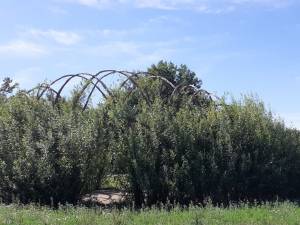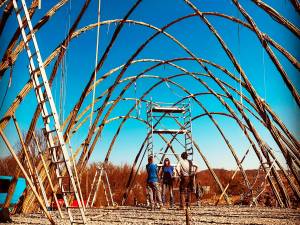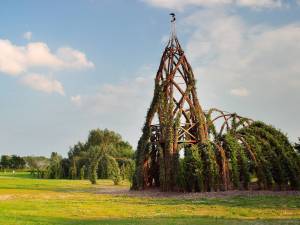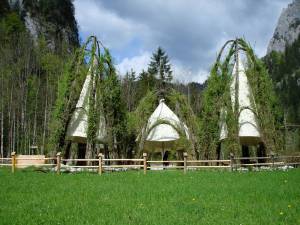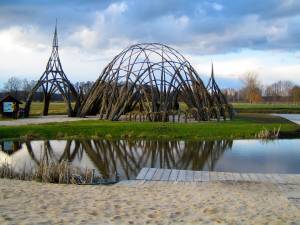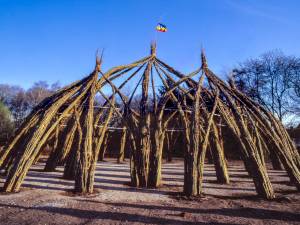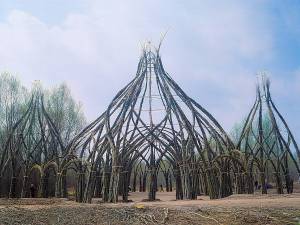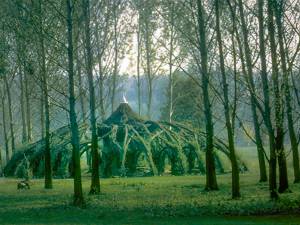Plant huts and palaces!
The trees and shrubs of the genus willow (lat. Salix) are fast-growing, they have strong roots, their branches are called canes, are flexible and have many leaves. Ideal conditions to not only weave baskets from them, but also to create something, found the architect Marcel Kalberer. He created the first willow works of art as early as 1983 and under his guidance in 1998, 300 helpers built the Auerworldpalast, which is still alive today.
It is a circular dome, has a diameter of 20 meters and a height of 5.50 meters and is located in Auerstedt near Weimar.
It is the model for a large number of similar, but always differently designed wicker art buildings, castles and domes made of willow rods worldwide.
The green classroom
If you want to build a green classroom for your school or company grounds, a circus arena for outdoor artists or a play hut in the school garden, you can do so with our help without much effort.
We build, or show you on site how it works.
We, that is Anna Kalberer and Peedy Evacic from the construction art group Gentle Structures.
We design willow structures as living nature art in public parks, build leaf huts next to kindergartens, pavilions in schoolyards, arbors next to churches, break halls on company grounds, willow towers in nature reserves, etc.
Building a living house together
We develop and realize the objects alone or as an art and community project with an educational concept.
We work with students from 3rd grade, pensioners, refugees, mentally ill people, as well as companies to strengthen their team spirit.
We advise, organize guide and are there until the dome stands.
The process of making such a wicker object is simple and can be done by people of any age and without special skills.
You need a place, preferably a meadow, lots of willow rods, water and a few tools.
Planting can be done in the spring from February to April, when the ground is no longer frozen, and in the fall from October to December, when the willow goes into hibernation.In the first two summers, the plants need to be watered and, if necessary, brought into shape.
Our projects are close to nature, sustainable, the planning, the implementation and the maintenance promotes a sense of community and strengthens the contributors in many ways. But a willow construction also costs something. You can save for it, collect donations. Fortunately, there are also a number of institutions, such as nature conservation associations, municipalities or foundations, which financially promote and support the action of a living willow construction.
If you want to listen to the wind in the willows and feel like tackling such a project, you should get in touch with us.
Your questions will reach us via the contact form:
Anna Kalberer and Peedy Evacic
www.sanftestrukturen.com
